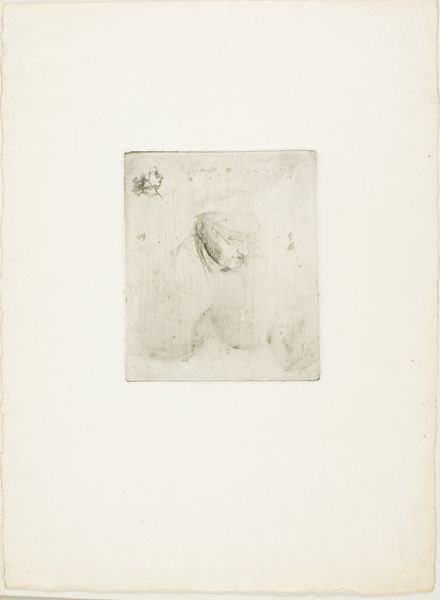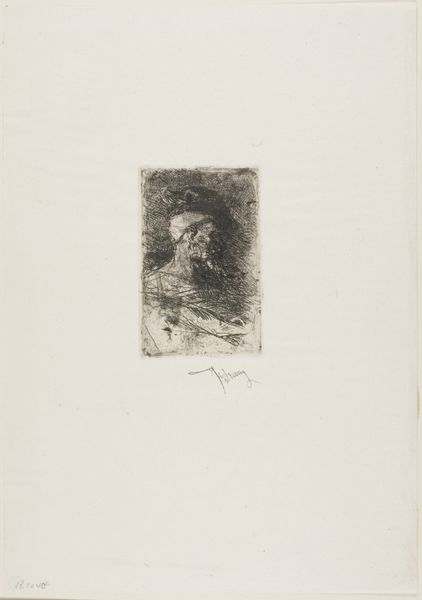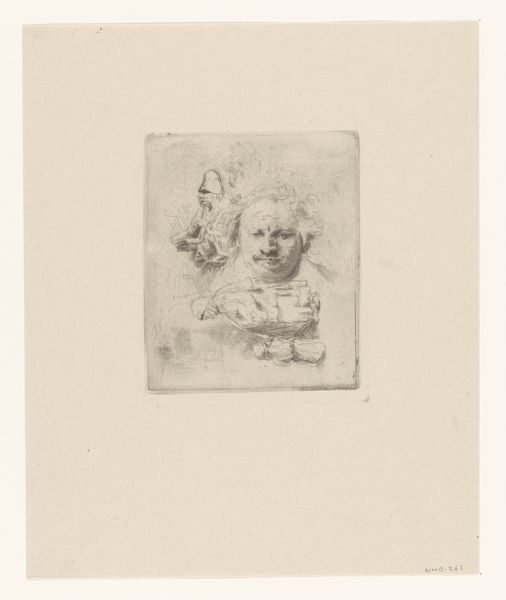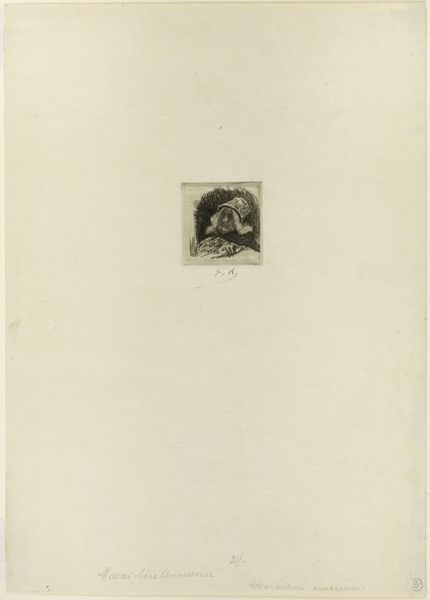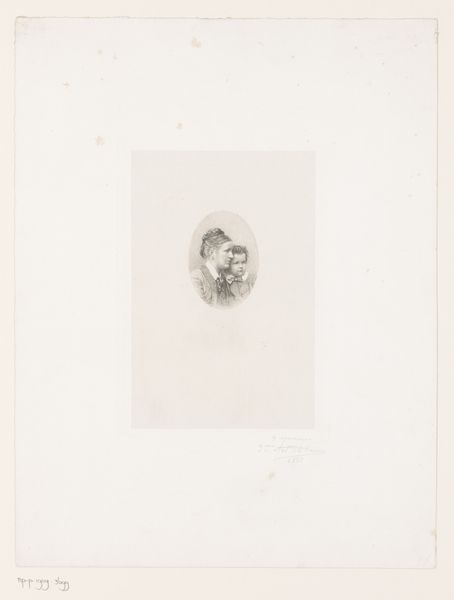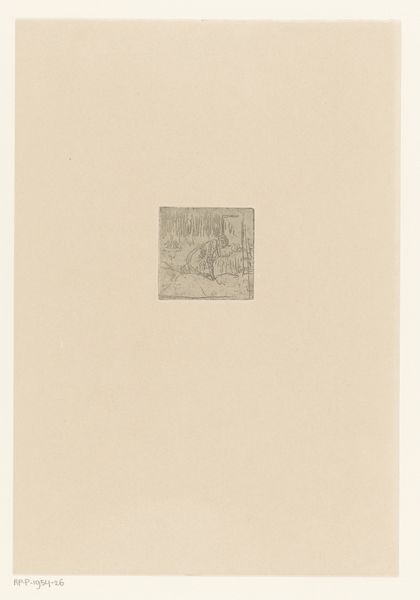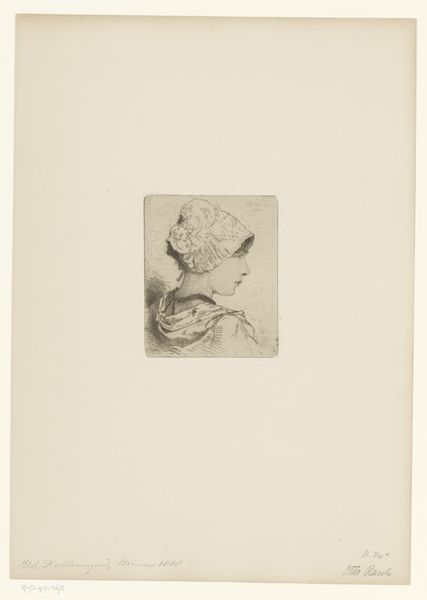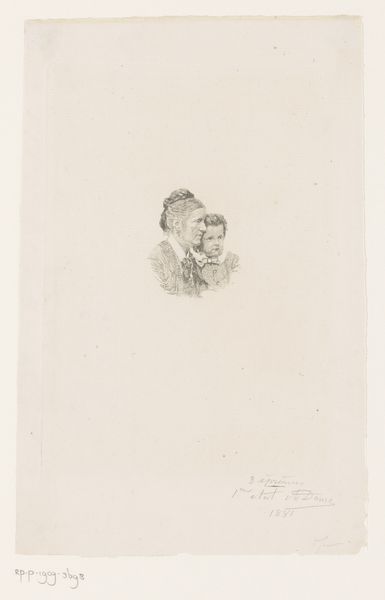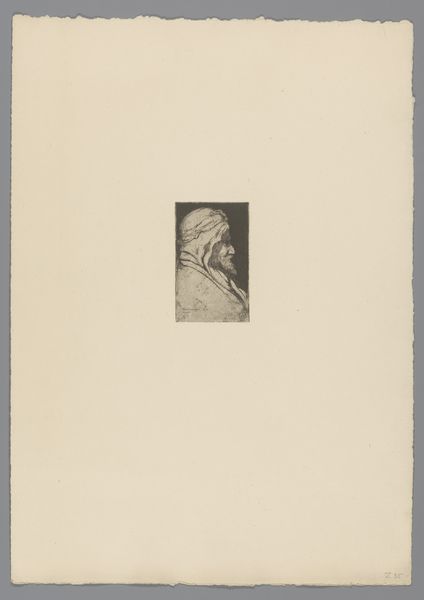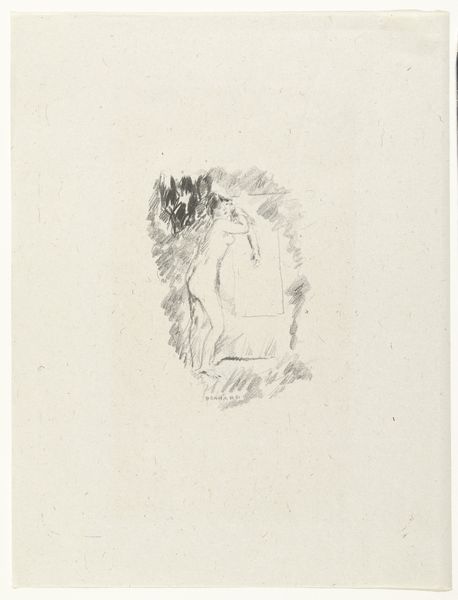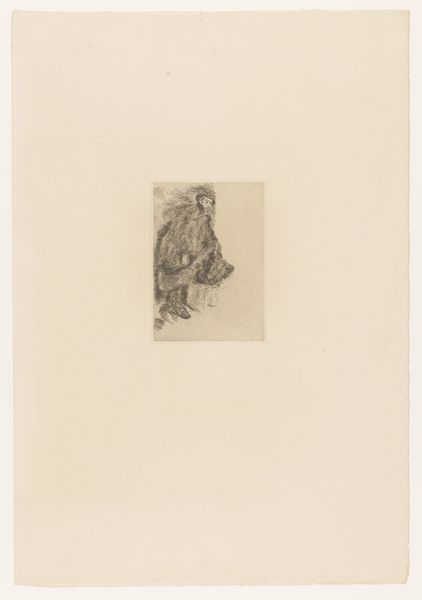
drawing, paper, ink
#
portrait
#
drawing
#
animal
#
dog
#
paper
#
ink
#
romanticism
#
realism
Dimensions: height 74 mm, width 65 mm
Copyright: Rijks Museum: Open Domain
Editor: Here we have "Hondekop," or "Dog's Head," an 1842 drawing by Johan Thomas Lundbye, rendered in ink on paper. The sheer simplicity of it strikes me; it's almost like a fleeting sketch, capturing a specific moment. What can you tell me about it? Curator: It's interesting how Lundbye, a celebrated landscape painter, would focus his attention so intently on this subject. It compels us to consider the shifting artistic values of the period, with Romanticism prioritizing emotion and the individual experience. Were domestic animals gaining significance, mirroring changing social attitudes towards nature and companionship? How does the dog serve as a representation of fidelity and human empathy? Editor: I see what you mean. There is something deeply intimate in the gaze. But doesn’t this level of focused realism feel out of step with the romanticism? Curator: Perhaps it reveals an artistic tension, doesn't it? The pull between the ideal and the real, between symbolic meaning and observed detail. Do you think the burgeoning middle class, with their own aspirations and sentimentality, influenced the artist’s choices here, creating a demand for relatable imagery? Editor: That’s fascinating – connecting it to societal changes. It gives new perspective. Curator: Consider also the museum context. How does exhibiting this seemingly personal drawing alongside grand historical paintings shape its interpretation, influencing how we understand Danish art and its relationship to its audience? Editor: I never considered that, thanks! I am definitely rethinking this now. Curator: Indeed. Reflecting on the political, social and institutional environment reveals some interesting insights and unexpected narratives in what appears, on the surface, to be a simple dog portrait.
Comments
No comments
Be the first to comment and join the conversation on the ultimate creative platform.
